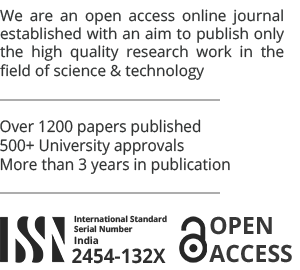Research Paper
The Impact of Nitric Oxide (No) On the Biological System
Published by: Vijaya Dubey
Full Details
Research Paper
Flexural Behaviour of Concrete Beams Reinforced With GFRP Rebars
Published by: Chidananda S. H, R. B Khadiranaikar
Full Details
Research Paper
Use of Demolished Waste in Partial Replacement of Coarse Aggregate in Concrete
Published by: Gowtham, Anandhan .R, V. Gokulnath
Full Details
Review Paper
Veneers: Modern Approach of Dentistry-A Review
Published by: Dr. Raisa Rashid, Dr. Waseem-ul- Ayoub
Full Details
Research Paper
Design & Analysis of Robotic Arm’s Part for Carbon Composite Material
Published by: Mukund Narayan Pandey, Amit Kr Srivastava, Paveen Kumar Maurya
Full Details
